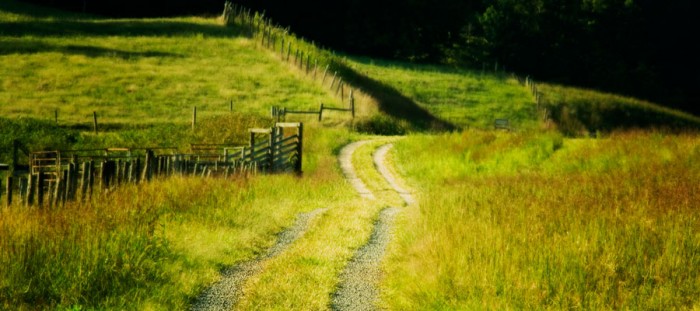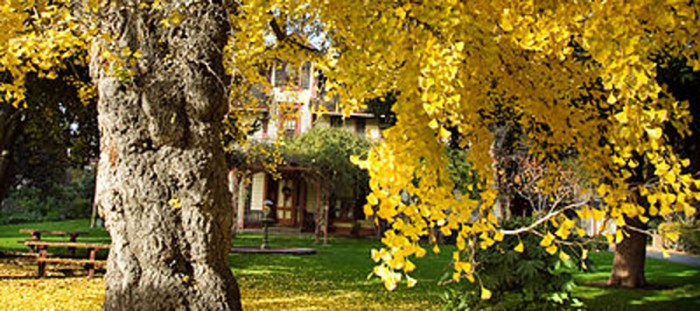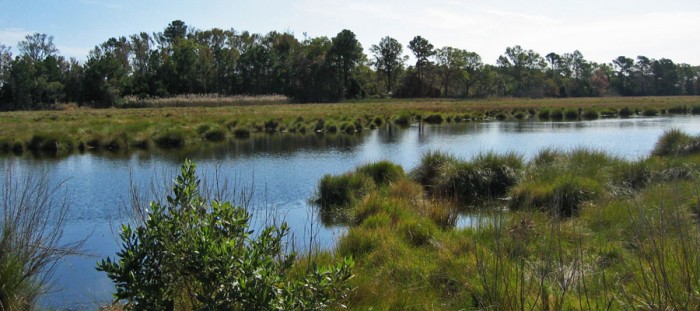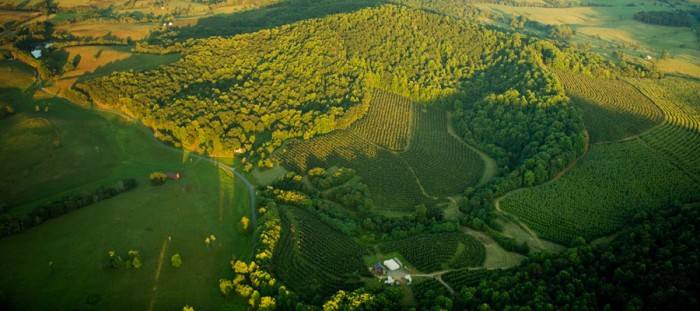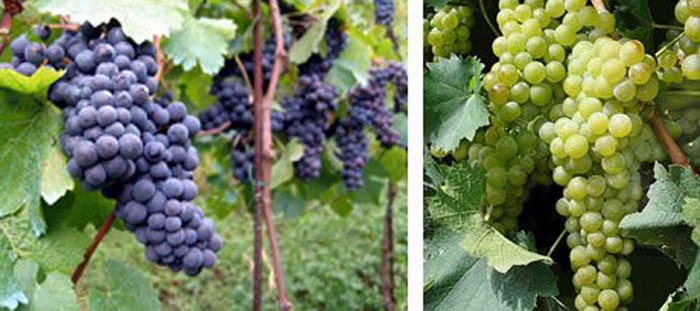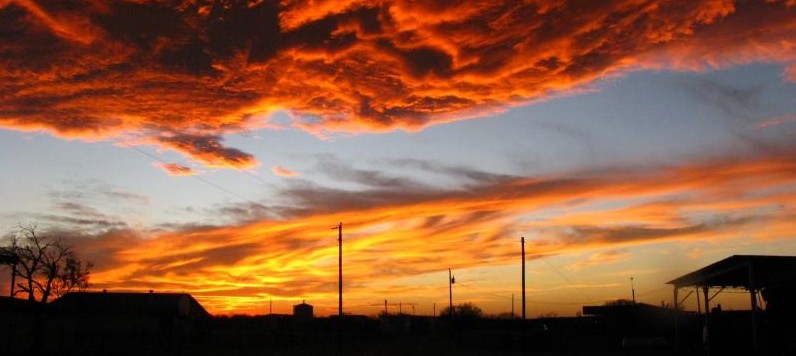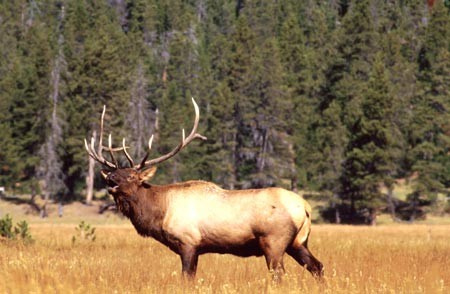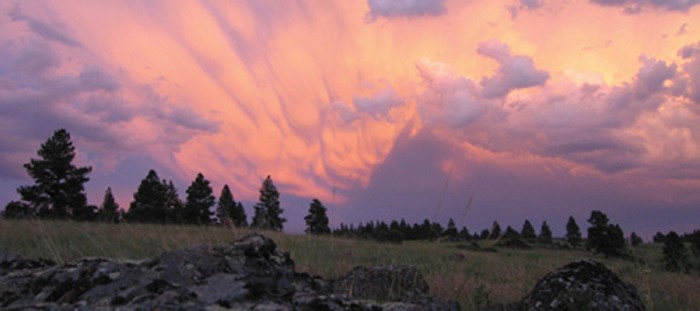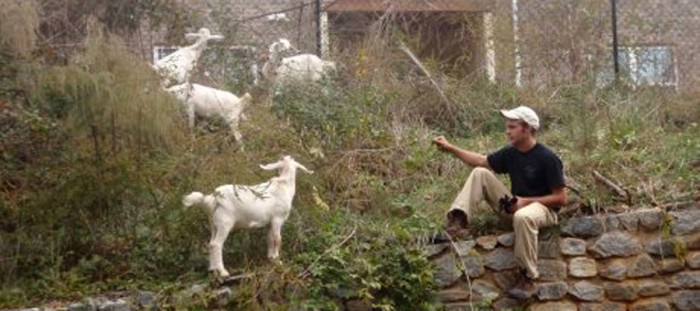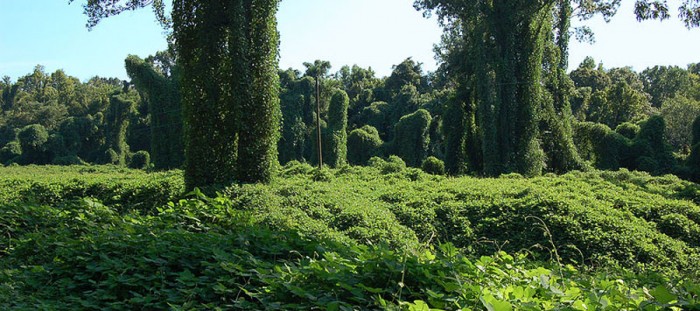Take a second to consider this for a second: would you rather eat a tomato that was shipped 1,000 miles or one that was grown just down the street? Don’t like tomatoes? Okay, how about raspberries? As you go out for a walk, wouldn’t it be nice to get away from all that pavement and go pick a couple raspberries as you admire the surrounding hills and meadows? As you make your breakfast in the morning, imagine admiring spectacular fall colors rather than your neighbor’s monochrome turf lawn.
As people begin to realize that residential developments don’t necessarily have to be ecological nightmares, localized agriculture has become, dare we say it, sexy. All across the country, residential developments that include agricultural components are springing up. Some communities are incorporating edible landscaping–like fruit and nut trees, berry bushes, cabbage, and lettuce–and allow residents to pick whatever they can use. Others include large tracts set aside for community gardening and even full-fledged farms. For example, FSC affiliate McKee Carson designed the master plan for Bundoran Farm, a 2,300-acre conservation community in beautiful rural Virginia that incorporates cattle, orchard and forestry operations, and a network of trails all while nestling 102 sensitively placed home sites into the landscape.
Best of all, the market is responding. Property values in agricultural areas are skyrocketing. Homeowners are demonstrating greater satisfaction with their choice of location. And homes in conservation developments are selling faster and for more than their counterparts in conventional developments.
We encourage you to learn more about incorporating agriculture into residential communities by reading The Wall Street Journal’s article “An Apple Tree Grows in Suburbia.”
Everybody’s got a favorite tree. If not one in particular, at least a preferred species. (If you don’t, you might want to check this out.) Around the office, tulip poplars, sycamores, and white oaks are the clear front runners. But, after seeing just how long it took our staff to annihilate a bag full of dried Michigan cherries, I’m a little surprised Prunus cerasus didn’t make the shortlist…
Beyond the pleasures associated with trees that immediately come to mind – children’s literature, climbing, fall scenery, hugging – there are many less visible ecosystem services provided by forests. A few are listed here:
- Habitat
- Carbon sequestration
- Fuel and wood production
- Watershed stabilization
- Shade & reduction of heat island effect
- Cultural preservation
For a more in-depth look at forestland goods and services, check out this publication by Southern Forests for the Future. (Photo courtesy of Mactographer)
Across the country, rural land is being subdivided and developed. New housing subdivisions, strip malls, and busy intersections are replacing rolling hills, expansive views, and dirt roads. With the financial incentives of developing such prime real estate, it’s no wonder many rural landowners are taking this route.
Conservation easements, however, are a tool conservationists have been using for quite some time to encourage the preservation of this undeveloped land. Benefiting from generous tax incentives, land owners who place their property under an easement agree not to ever develop their land, thereby protecting it for future generations.
Field Sport Concepts is an enthusiastic support of conservation easements. Please let us know how we can assist you in securing an easement for your land!
There’s been quite a bit of talk around the office about collaborating more with timberland management professionals. We’re confident there is no shortage of opportunity to mesh our design philosophy of sustainable, working landscapes with the scientific and economic side of forestry.
If forestland is to be intensively managed for timber over several years or decades, why not consider the recreational opportunities in the long term vision for a property? Sure, trees will come and go cyclically with the seasons and market, but the wildlife, vistas, and streams will all remain to be enjoyed forever. It would be a shame not to design and manage with these resources in mind.
Consider future land uses. Roads built and stands preserved should be designed with intention, creativity, and foresight. Perhaps the property’s life after timberland includes agriculture, hunting and fishing, or even a conservation community. Whether it be in the form of pre- or post-harvest conceptual master planning and marketing, managing successional aesthetics, or designing for the outdoors enthusiast, we hope you’ll keep us in mind in the future.
To see some examples of how we’ve taken advantage of the inherent properties of forests, we encourage you to click around a few of our past projects:
– Bundoran Farm
– Little Mountain Ranch
– Terra Chula Plantation
Of the great wine-producing regions in the U.S., Napa and Sonoma no doubt come to mind. Knowledgeable enthusiasts might even add Walla Walla Valley in Washington and the Finger Lakes in New York to their list. Virginia’s countryside, however, is all too often overlooked. That’s a shame, because Virginia’s vintners have been working hard to express the region’s unique terroir—the effect of the local climate, soil, and topography on the character of a wine. And as the 2011 Wine Bloggers’ Conference demonstrates, those producers have been fabulously successful.
From July 22-24, wine bloggers and writers, new media innovators, and wine industry leaders from around the country converged on Charlottesville, VA to sample offerings from all six of Virginia’s wine-making regions: the Shenandoah Valley, Eastern Shore, North Fork of the Roanoke River, George Washington Birthplace, Rocky Knob, and Monticello. Conference participants were treated to a welcoming reception at Monticello. As the organizing director, Kurt Burkhart, put it, “I can’t imagine a better setting to watch the beautiful sunset than over the Blue Ridge Mountains. The Jeffersonian connection was most intriguing to this group.”
Though Virginia wines only recently catapulted onto the world stage, the state’s viticulture is steeped in history. Citizens of colonial Jamestown placed such a high value on wine production that each male was required to tend at least 10 grape vines. Land dedicated to these vineyards, however, was soon converted to host the much more lucrative cash crop, tobacco. Then, at his home at Monticello, Thomas Jefferson sought to realize the promise of Virginia wines. Unfortunately, although he actively studied and cultivated European grapes for over 30 years, Jefferson’s vineyards never produced a single bottle of wine.
In the 1820s, Virginia vintners began experimenting with wines made from muscadines, or Native American grapes. The grapes proved to be the key to Virginia’s success when, in 1873, a Virginia Norton wine was named “best red wine of all nations” at the Vienna World’s Fair and received a gold medal at the Paris World’s Fair in 1889. When Prohibition came into effect, however, Virginia’s wine production was halted and had been slow to recover.
Today, however, Virginia viticulture is flourishing! The state now boasts nearly 200 wineries, nearly all of which are relatively small holdings and operated by their founding families. As one commentator put it, “Virginia is not just a producer of wine, but a wine region,” characterized by an “unparalleled sense of history, magnificent scenery, a burgeoning food scene, and first class facilities.” Travel and Leisure magazine’s Bruce Schoenfeld even declared Virginia one of five up-and-coming wine regions (along with Spain, Italy, Chile, and New Zealand) that “should be on the must-visit list of any adventurous wine traveler.”
In an effort to support Virginia’s wineries, policymakers are expanding state support for vineyards as well as other types of agriculture. The Virginia Wine Board recently released a study that found vineyards to be the only growing agricultural sector in the Commonwealth and pointed to it as a critical piece of Virginia’s local food-shed. Further, Virginia wineries have become a major source of agritourism, attracting over one million visitors each year. In an effort to continue to promote this trend, the Virginia state legislature recently enacted a tax credit that would cover up to 25 percent of the cost of certain equipment and materials up to $250,000 per year.
This incredible growth is due in part to the climate as well as availability of cheap land relative to other major wine-producing regions. Perhaps it’s time to revisit your dreams of someday owning and operating a vineyard – or at least producing your own vino della casa…
The affiliates of Field Sport Concepts have a long and distinguished history of designing world-class working landscapes. With expertise in master planning and conservation finance strategies, we will work with you to design an agricultural or viticultural practice and find ways to assist its financial well-being. So, whether you wish to re-envision and enhance an existing agricultural operation or establish a brand new vineyard, we have the tools to make your goals a reality.
In a few days we’ll be releasing our warm weather edition of the Field Sport Concepts Newsletter. The content will include project updates, company news, and related stories. Stay tuned for more info.
In the meantime, click here to prepare yourself with past installments of our newsletter. If you aren’t yet subscribed to our (almost) quarterly newsletter, it’s time to jump on the wagon. At the top of the ‘click here’ page from a few sentences back is a box. In that box goes your email address. Press ‘submit.’ Mission accomplished.
Speaking of elk (songs), we stumbled upon this cool clip of a beast of a bull elk bellowing out autumn love songs. Pretty impressive, huh?
While we’re on the subject…let us recommend a neat article about the elk reintroduction efforts in Tennessee and Kentucky. After decimating their respective herds in the late 19th century, both states can now boast healthy, self-sustaining populations. Healthy enough, in fact, to offer a limited hunting opportunity to a lucky few. Furthermore, the revenue generated from the license lottery is no small chunk of change – individual tags have sold for as much as $17,000! Most of this money is used to fund the reintroduction effort, as well as assist other conservation related programs.
[Actually, Tennessee’s 5th and final elk hunting license of the season is actually being auctioned off on ebay right now. At “publishing time,” the pricetag was still under ten grand. Better hurry up and make moves…]
Also interesting are the areas where these elk have naturally gravitated: large tracts of abandoned strip mines. So, these elk are essentially brought in to turn an otherwise underutilized and unproductive landscape into a financially viable and attractive piece of land. Hmm, sounds a lot like adaptive reuse and alternative programming to us. We’re not so different after all, are we, Elk?
One more thing, because you only get so many chances to segue with elk: the Rocky Mountain Elk Foundation is teaming up with four other of the biggest land and wildlife conservation agencies to host the Land & Wildlife Expo in Nashville, TN early next month. We’ll be there. If you’re attending as well, feel free to drop us a line. We’d love to meet you.
Here’s an inspiring piece of writing we’d like to pass on from LandReport.com.
The article profiles Elk Song Ranch, an amazing 7000+ acre piece of property in Eastern Oregon. Through a strategic and comprehensive management plan, the owner restored the overgrazed and underutilized land into an outdoorsman’s paradise – one with ample game, healthy streams, and reinvigorated forests. It’s a perfect example of how a multidisciplinary approach to managing a working landscape can benefit both the property and its inhabitants, including those of the antlered variety. (Apparently, seeing dozens of massive elk roaming the ridges every day is now commonplace. Wouldn’t that be nice?)
A big thanks to Ross Seyfried, the article’s author and Elk Song’s owner, for permission to use his photography and link to the story. If Elk Song Ranch doesn’t find a new owner in the near future, we’re going to start coordinating bake sales and car washes to make a bid…
We’ve posted material dealing with the culinary side of our natural environment. And our last post touched on the hot topics of invasive species and ecological restoration. Time to mesh the two:
To the dismay of Asian carp, garlic mustard, and wild hogs everywhere, there is a grassroots trend devoted to tracking down, harvesting, and eating invasive species. All in the name of sustainability.
Take our fellow Virginian, Jackson Landers, for example. His soon-to-be-released book, Eating Aliens, chronicles his quests to seek, destroy, and consume any and every non-native plant and animal that walks, slithers, swims, or takes root in this great country. A lofty but noble goal, indeed. You can read more about Jackson’s efforts on his blog – The Locavore Hunter.
Similarly, our summer intern has spent his last few years at the University of Georgia reading, writing, and actively learning about goats and their use in the landscape, particularly those covered in invasives. His blog – Little Lebowski Urban Goats – is described as “a mildly academic study of several small goats picking up our landscaping slack in overgrown backyards of Athens, GA. Like a bad Jeff Foxworthy joke, with a permaculture twist.” Because the project stemmed from other passions – namely, urban agriculture and food connectivity – each goatscaping season has ended with a celebratory goat roast. An unconventional barbecue meat, yes, but don’t knock it ‘til you’ve tried it. He claims he’s entering blue ribbon territory with some recipes…
Depending on the extent of your non-natives problem, goats may or may not be a logical part of the solution. Regardless, give us a call; we’d be happy to lend our help. But be forewarned, Zach will talk your ear off about goats if given the chance.
It’s no secret that non-native invasive plant (and animal) species have had a huge impact on our natural landscapes and ecosystems. With their relentless growth habits and lack of natural checks and balances, plants like kudzu, wisteria, privet and honeysuckle have effectively overtaken huge swaths of our landscape.
From an ecological standpoint, the results are often disastrous – habitat is lost and native species are crowded out, resulting in a relatively sterile, unproductive, and alien landscape. Unfortunately, most examples are closer to home than one would expect. You only have to go to your nearest recent development site or motorway to see the devilish plants in action.
Their economic effect is nothing to scoff at either. Most academic studies guesstimate the annual cost of all invasive species to be a 12-digit number. Yes, that’s billions. With a “B.” For us landscape architects, invasive species are a constant headache. The same plants that were installed with good intentions decades ago have exploded into a nation-wide problem. And the worst part: there’s nothing uglier than a monoculture of undesirable, unkempt plants.
Restoration efforts range from community work days to hardcore aerial chemical applications. Imagine being ‘choppered in to acres of kudzu in a search and destroy mission for the mother crown. Sounds like the long lost horticultural installment of the Rambo series, doesn’t it?
Here in the office, we make a conscious effort to design our landscapes with a responsible and ecologically sensitive approach. Click here to view pictures from Field Sport Concepts’ affiliate McKee Carson’s project at the Charlottesville Union Bank & Trust, a redesign that showcases and celebrates the urban site’s inherent properties and indigenous flora.
If your property could use a helping hand in its transformation from exotic jungle to native oasis, we’d be more than happy to help.
Photo courtesy of Gsmith

